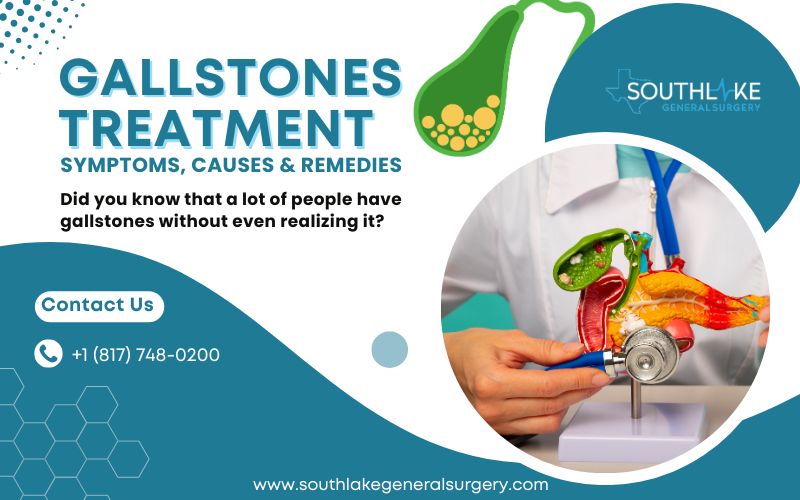Gallstones treatment can differ depending on how severe the condition is. The digestive system includes a variety of organs that work together. The gallbladder is an important organ located on the right side of the abdomen. Bile, stored in the gallbladder, plays a crucial role in the digestion of lipids.
Gallstones occur when hard deposits start to form. If left untreated, these stones may lead to digestive issues and discomfort.
Key Highlights
- Gallstones are solid structures that occur in the gallbladder. These typically occur due to elevated levels of cholesterol or bilirubin.
- While many individuals with gallstones may not experience any symptoms, others might encounter significant pain, nausea, or difficulties with digestion.
- Gallstones, if left untreated, can cause serious health problems including infections, inflammation of the pancreas (pancreatitis), and inflammation of the gallbladder (cholecystitis).
- Doctors use various methods to find gallstones, including blood tests, ultrasounds, CT scans, and specialized tests such as MRCP and ERCP.
- Gallbladder removal (cholecystectomy) is the standard of care. It is common practice and mostly safe to undergo this procedure.
Understanding Gallstones
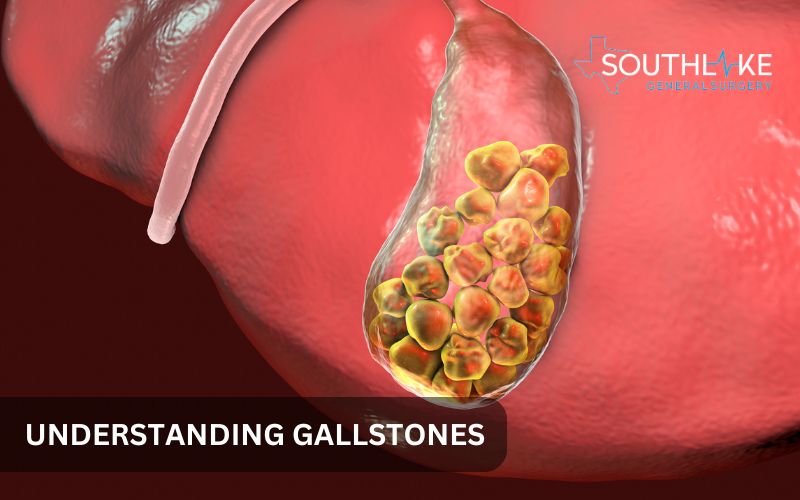
Imagine small stones, similar to pebbles, nestled away in your gallbladder. These are known as gallstones. These are primarily composed of crystallized cholesterol. The bile ducts can get clogged due to these stones. Digesting lipids is an essential function of bile. Blocked bile flow can lead to pain and significant health issues.
Did you know that a lot of people have gallstones without even realizing it? It’s quite common! These stones, often referred to as “silent,” typically don’t present obvious symptoms. However, if someone experiences blockages or other concerns, the discomfort can range from mild to quite severe.
Defining Gallstones and Their Importance
Did you know that a significant majority of gallstones, approximately 80%, are cholesterol stones? It’s quite interesting! These stones develop when there’s an excess of cholesterol in the bile. Their yellowish-green color suggests that our diets might be rich in fat and cholesterol.
Another type is called pigment stones. Only about 20% of gallstones are these extremely uncommon stones. They typically come in various colors of black or dark brown.
Bilirubin levels can become elevated in the bile, leading to the formation of these substances. When red blood cells decompose, bilirubin is produced.
Issues can arise when stones become lodged in the bile duct. Bile flows from the gallbladder to the small intestine through the bile duct. When stones obstruct it, this can lead to significant discomfort, swelling, and digestive problems. This often requires medical assistance.
The Role of the Gallbladder in Digestion
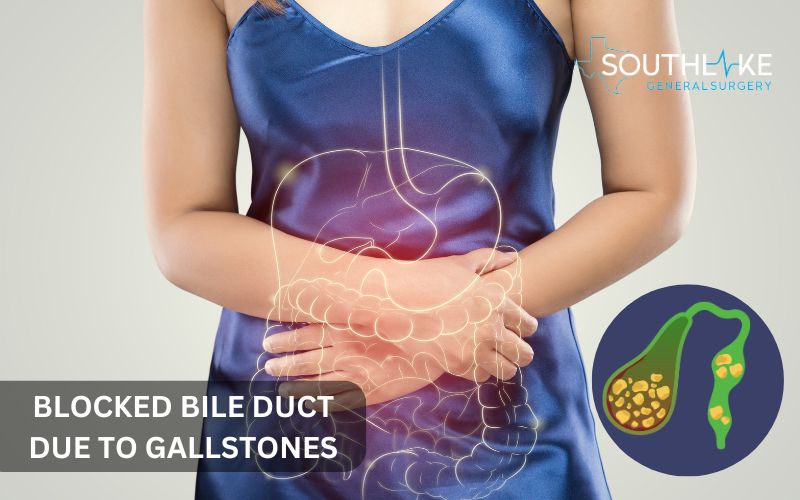
The gallbladder can be found just beneath the liver. The gallbladder is responsible for storing bile, which is a green-yellow liquid produced by the liver. Bile plays a crucial role in the process of fat digestion. After enjoying a fatty meal, your gallbladder receives a signal to release bile, helping with digestion!
- The bile travels through various ducts until it reaches the small intestine.
- When it reaches the small intestine, it aids in the breakdown of fats. This makes it easier for your body to absorb fat.
- This step plays a crucial role in absorbing nutrients and eliminating waste.
However, when gallstones obstruct the bile duct, it can result in complications. When bile accumulates, it can lead to discomfort and swelling. This emphasizes how crucial it is to maintain a healthy and clear bile duct.
Symptoms and Early Signs of Gallstones
Gallstones are quite common among many individuals. However, some people may not notice any signs at all. Some individuals may experience sharp pain, which might indicate that there is an issue to consider. Paying attention to these early signs is really important! This can assist in making a swift diagnosis and providing treatment.
A key indicator of a gallbladder attack is experiencing a sudden, sharp pain in the upper right side of your abdomen. You might notice that this pain can extend to your back or shoulder.
Many people refer to this uncomfortable sensation as biliary colic. A stone can sometimes block the bile duct, leading to a buildup of the bile.
Recognizing the Symptoms
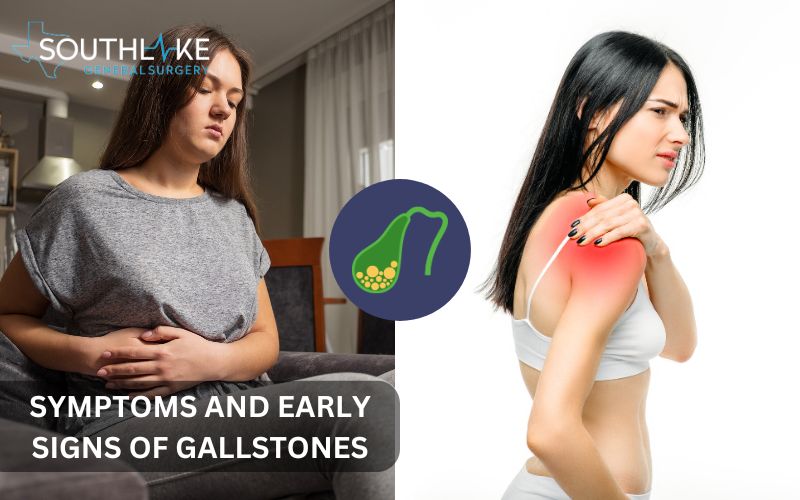
Biliary colic is a significant pain that frequently accompanies gallstone disease. It often starts suddenly with a sharp cramp in the upper right side of your belly. You might experience this pain after enjoying some fatty foods. The gallbladder is attempting to push bile through a blocked bile duct, which leads to this occurrence.
- If you’re experiencing intense pain, it’s possible you may also feel a bit dizzy.
- You might experience nausea, some discomfort in your stomach, and a sensation of fullness.
It’s essential to recognize that these symptoms may resemble other health conditions, such as irritable bowel syndrome. Importantly, a diagnosis must be made with precision.
If you’re experiencing intense stomach pain, particularly after meals, it’s best to consult a doctor promptly. While the pain may be resolved over time, it’s important to pay attention to it, as neglecting it could result in more significant issues down the line.
When Symptoms Warrant Medical Attention
Gallstones can be harmless, but it’s important to pay attention to them, as neglecting them may result in significant issues. One of these issues is acute cholecystitis. A blockage can cause bile to become trapped. This situation might increase the chance of developing an infection.
Acute cholecystitis symptoms include a high temperature, nausea, vomiting, severe stomach pain, and soreness on the right side of the abdomen. You should consult a medical professional without delay if you experience any of these signs. The hospital may have to admit you.
Gallstones have the potential to block the bile duct. This could lead to inflammation of the pancreas, which is known as pancreatitis.
In certain uncommon situations, it may result in gallbladder cancer. If you notice that your symptoms are getting worse, it’s a good idea to reach out for medical help as soon as possible. You can lessen the possibility of major health problems by doing this.
The Causes Behind Gallstone Formation
The formation of gallstones is triggered by an imbalance in the bile. This imbalance may happen when there are too many components present in the bile.
Your diet, genetics, and general health can play a role in this matter. Gallstones may form when bile includes high concentrations of cholesterol or bilirubin.
Cholesterol stones are actually the most prevalent type of gallstones you’ll come across. It’s helpful to understand these causes so that we can effectively prevent and treat gallstones.
Dietary Factors Contributing to Gallstones
Diet plays an essential part in the formation of gallstones, particularly those made of cholesterol. Increased cholesterol in bile is a symptom of a diet high in saturated fat and cholesterol. The probability of gallstone formation is increased.
- Quick weight loss may negatively affect your gallbladder.
- Crash diets and surgical weight loss procedures are two potential causes of this medical condition.
- Rapid weight loss can lead to the release of cholesterol from storage, potentially resulting in the formation of stones.
Maintaining a balanced diet is essential for everyone. This can assist you in managing your weight effectively.
When choosing items to include in your diet, be sure to choose those that include fruits, vegetables, and whole grains. Maintaining a healthy weight can be simple with some easy-to-follow changes!
Lifestyle and Genetic Predispositions
Your diet and lifestyle play a significant role, but it’s also interesting to note that your genes can influence your risk for gallstones. If your family has experienced gallstones, you could be at greater risk of developing them yourself.
- Certain groups, such as Native Americans and Mexicans, may have higher levels of cholesterol in their bile. The possibility of getting gallstones may increase.
- Additional risk factors to consider are age and sex. Women, particularly those who have given birth, have an increased risk of developing gallstones.
- As people age, their risk of developing gallstones increases for both women and men.
Diagnosing Gallstones: A Step-by-Step Approach
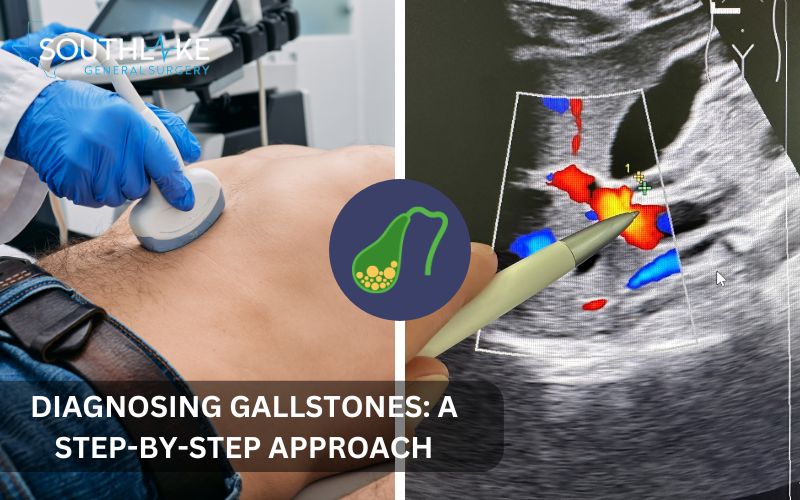
If you think you might have gallstones, it’s wise to reach out to your doctor for advice. They will conduct tests to determine whether you have gallstones and to identify their location in your gallbladder. These tests are really helpful in determining the most suitable treatment for you.
Your doctor may recommend a few tests to take a closer look at your gallbladder and bile ducts. They will examine for any blockages and assess how serious the issue is.
Some tests might use a small light to help create a clearer image. The tests vary from straightforward images to more comprehensive assessments.
Initial Assessment and Physical Examination
Your doctor will ask you some personal questions to establish a baseline before making any claims about gallstones. Their inquiry will center around your medical history. They will inquire about your symptoms, dietary habits, and medical history in general.
- Your doctor will examine you physically. Your upper right abdomen will be their primary focus.
- They can feel soreness or tenderness by pressing them. Potentially indicative of inflammation.
- An ultrasound of the abdomen may be recommended by your doctor. This simple procedure generates pictures of your interior organs using sound waves.
- It’s an effective method for determining the health of your gallbladder and detecting gallstones.
Advanced Diagnostic Imaging Techniques
If your doctor suspects there might be issues with your biliary system, they might suggest some advanced imaging tests to get a clearer picture.
Some of the tests you might encounter are magnetic resonance cholangiopancreatography (MRCP) or endoscopic retrograde cholangiopancreatography (ERCP).
- MRCP is a test that doesn’t require any invasive procedures. This procedure utilizes magnetic resonance imaging (MRI) to create detailed images of your liver, gallbladder, bile ducts, and pancreas. This test is helpful for detecting stones in the bile ducts.
- An invasive test is ERCP. In this procedure, a camera is attached to a thin, flexible tube. This tube travels from your oral cavity into your small intestine after passing via your neck and esophagus. It assists the doctor in observing the bile duct opening, which could lead to the removal of stones obstructing it.
Comprehensive Treatment Options for Gallstones
Treating gallstones really depends on the severity of your symptoms and whether there are any additional issues to consider. If you’re not experiencing any symptoms, which is known as being asymptomatic, it could be beneficial to simply wait and observe for now.
Adjusting certain aspects of your lifestyle can be beneficial in these situations. If you’re experiencing frequent pain or other issues, considering surgery might be a beneficial option for you. The surgical procedure involves the removal of the gallbladder.
Non-Invasive Treatments and Lifestyle Adjustments

If you’re experiencing mild symptoms or none at all, you’ll be pleased to know that simple treatments and lifestyle adjustments can be quite effective! These options are great for managing symptoms and preventing the formation of new gallstones.
- To improve your diet, try to reduce your consumption of fat and cholesterol.
- Introduce more fiber into your diet to help manage bile and reduce the risk of stones.
- Maintaining a healthy weight can be accomplished by including regular exercise in your routine and by eating a balanced diet.
At times, your doctor might recommend shock wave lithotripsy. This is a gentle method for utilizing sound waves. Using this method, big gallstones are broken up into tiny pieces.
In most cases, your body can more easily pass smaller pieces. It is important to acknowledge that this treatment may not be suitable for everyone.
Surgical Options: Risks and Benefits
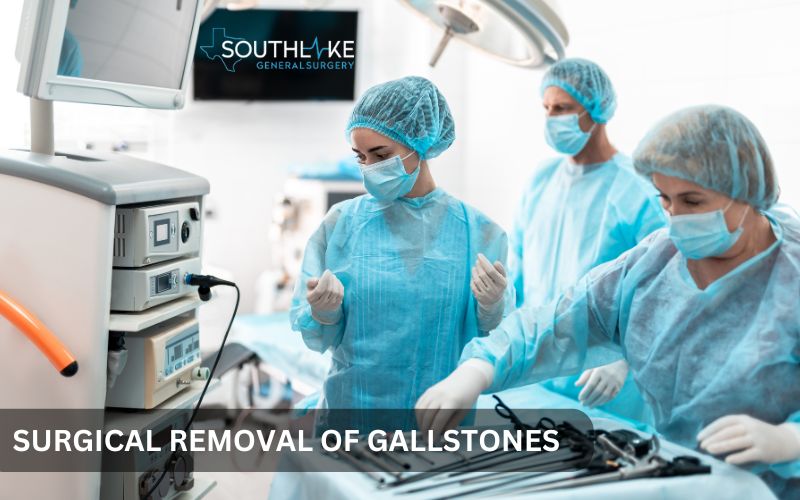
If you’re often experiencing discomfort from gallstone symptoms, it might be an excellent choice to consider surgery to remove your gallbladder. The term for this surgical procedure is cholecystectomy.
The use of laparoscopic surgery is the most effective method for carrying out this operation. By reducing the strain on the body, this approach promotes faster healing and reduces the visibility of scars.
During laparoscopic surgery, the practitioner makes minimal incisions in the abdominal area. The laparoscope, which is a very small tube equipped with a camera, is what the surgeon uses to see inside.
The gallbladder is removed through these tiny incisions. There are occasions when open surgery is the best option to consider. This means that the doctor will have to create a larger incision.
Surgery to remove the gallbladder is typically considered to be a risk-free procedure. Be conscious of the fact that there are a few possible risks to take into consideration. Some possible concerns may involve bleeding, infections, and reactions to anesthesia.
Even with these risks in mind, the advantages frequently outweigh them. Getting rid of gallstones can help avoid potential health issues down the line. This makes the surgery a great option!
Living with Gallstones: Management and Prevention
It looks like surgery to remove the gallbladder might be necessary. Living a healthy lifestyle is really important! This can help alleviate symptoms and reduce the probability of future stone development.
Easy suggestions such as enjoying a balanced diet, staying active, and maintaining a healthy weight can help reduce risks. These habits help with digestion and reduce the likelihood of gallstones coming back.
Diet and Lifestyle Modifications for Prevention
One effective way to lower the risk of gallstones is by maintaining a healthy diet. Here are a few adjustments to your diet and lifestyle that may assist in preventing them:
- Enjoy a variety of foods such as fruits, vegetables, and whole grains.
- These foods are rich in fiber. They assist in maintaining healthy cholesterol levels and promote good digestion.
- Managing your weight is key to preventing gallstones.
- Reaching a healthy weight is all about enjoying a balanced diet and keeping active with regular exercise. This helps maintain a healthy balance of bile in your body.
- It’s important to be cautious with rapid weight loss, as it may increase your risk of developing gallstones.
- Make modifications so that you know you can keep up in the long run if you want to lose weight gradually.
Monitoring and Managing Gallstone Symptoms
If you have gallstones and are feeling well, it’s beneficial to monitor any changes that may occur. Keep an eye out for signs such as stomach pain, nausea, or any changes in your bathroom habits.
- Taking over-the-counter pain relief medicine can be a helpful way to alleviate gallstone symptoms and make you feel more comfortable.
- An abdominal heating pad might provide some much-needed relief.
- Make sure to get plenty of rest!
- It’s a good idea to avoid fatty or greasy foods.
This could help lessen the intensity of your symptoms. By following these tips, you’ll be able to manage your symptoms more effectively. Having gallstones doesn’t mean you can’t enjoy a good quality of life!
Conclusion
The key to maintaining good health is managing gallstones. To better manage this issue, it is helpful to understand the symptoms, causes, and remedies. To alleviate discomfort and avoid complications, you have the option of non-invasive procedures or surgical intervention.
A balanced diet and regular exercise are two examples of healthy lifestyle modifications that everyone should make. It’s critical to stay alert for any signs and get medical assistance promptly. Always remember that gallstones can affect anybody differently.
A person must take care of themselves. Despite the obstacles of gallstones, people can live full lives by being informed, leading healthy lives, and seeking care when needed.
Make an Appointment
If you have symptoms of gallstones or need help with treatment options, you should visit Dr. Valeria Simone, MD. Dr. Simone focuses on gallstone disease and similar issues.
To set up an appointment, call the clinic at +1 (817) 748-0200, Southlake General Surgery in Texas. Taking these steps can help you manage your gallstone condition better.
Frequently Asked Questions
Can diet alone resolve gallstones?
Weight loss and reduced cholesterol levels are two benefits of adopting a healthy diet. This could prevent gallstones from developing. However, if you already have stones, modifying your diet will not remove them. Improved bile flow and easier digestion can be the result of a well-balanced diet rich in fruits, vegetables, and fiber.
What are the risks of gallstone surgery?
The risks associated with laparoscopic and open cholecystectomy procedures are typically low. However, it’s important to note that there can be complications, just like with any surgical procedure. Some of these risks include complications with the bile duct, infection, bleeding, and adverse reactions to anesthesia. However, major issues are uncommon. Recovery from these surgeries is usually smooth for many individuals.
How long is the recovery after gallbladder removal?
The length of time required for recovery following gallbladder removal surgery varies among surgical procedures. In general, individuals who undergo laparoscopic surgery can return to their regular activities in approximately one to two weeks. On the other hand, people who have an open cholecystectomy might need a few weeks to fully recover. To get the most out of your post-operative treatment, be sure to follow all of your surgeon’s specific instructions.
Can gallstones recur after treatment?
It’s quite uncommon for gallstones to return after gallbladder surgery. It’s interesting to note that while it’s not very common, stones can occasionally form in the bile ducts. Staying healthy is key to reducing the chances of getting stones again! It’s all about enjoying a balanced diet and keeping active through regular exercise!
Medically Reviewed By: Dr. Valeria Simone MD
Board-certified General Surgeon at Southlake General Surgery, Texas, USA.
Follow us on Facebook and YouTube.
References:
- National Library of Medicine. Anesthesia. medlineplus.gov/anesthesia.html.
- Gallbladder removal – laparoscopic – discharge.medlineplus.gov/ency/patientinstructions/000117.htm.
- Gallbladder removal – open – discharge. medlineplus.gov/ency/patientinstructions/000118.htm.
- Treatment for Gallstones.” National Institute of Diabetes and Digestive and Kidney Diseases, 30 Aug. 2022, www.niddk.nih.gov/health-information/digestive-diseases/gallstones/treatment.
- Gutt C, Schläfer S, Lammert F. The Treatment of Gallstone Disease. Dtsch Arztebl Int. 2020 Feb 28;117(9):148-158. doi: 10.3238/arztebl.2020.0148. PMID: 32234195; PMCID: PMC7132079.
- “Surgical and Nonsurgical Management of Gallstones.” AAFP, 15 May 2014, www.aafp.org/pubs/afp/issues/2014/0515/p795.html.

